MXA RACE TEST: THE REAL TEST OF THE 2024 SUZUKI RM-Z450

Q: FIRST AND FOREMOST, IS THE 2024 SUZUKI RM-Z450 BETTER THAN THE 2023 RM-Z450?
A: No! First introduced in 2018 and untouched in 2020, 2021, 2022, 2023 and 2024, this bike is old tech.
Q: WHAT ARE THE AREAS WHERE THE 2024 SUZUKI RM-Z450 SHINES?
A: Here is a quick list of where the 2024 RM-Z450 shines.
(1) Price. Suzuki raised the price of the 2024 RM-Z450 from $8,999 to $9,199. It is still the cheapest 450cc motocross bike on the showroom floor, but jumping from the $8,000 price range into the $9,000 range is bad marketing.
(2) Cornering. For decades the Suzuki was the best-turning bike on the track, but most of its competition has closed the handling gap. They have caught up to the Suzuki, but they haven’t surpassed it. The RM-Z450 is still the king when it comes to railing tight inside lines.
(3) Powerband. Every MXA test rider loves the RM-Z450 powerband, not because of the quantity of horsepower, but because of the quality of the midrange power.
(4) Ergos. The bodywork, which was updated in 2018, is narrow. The bar bend is comfortable, and everything falls easily at hand.
(5) Tuneability. The 2024 RM-Z comes with three plug-in maps: stock (black), aggressive (white) and mellow (gray). Additionally, Suzuki has a proprietary MX-Tuner 2.0 Apple and Android mapping tool.
(6) Color. The yellow plastic is a thing of beauty in motion. It looks clean, even when it’s dirty.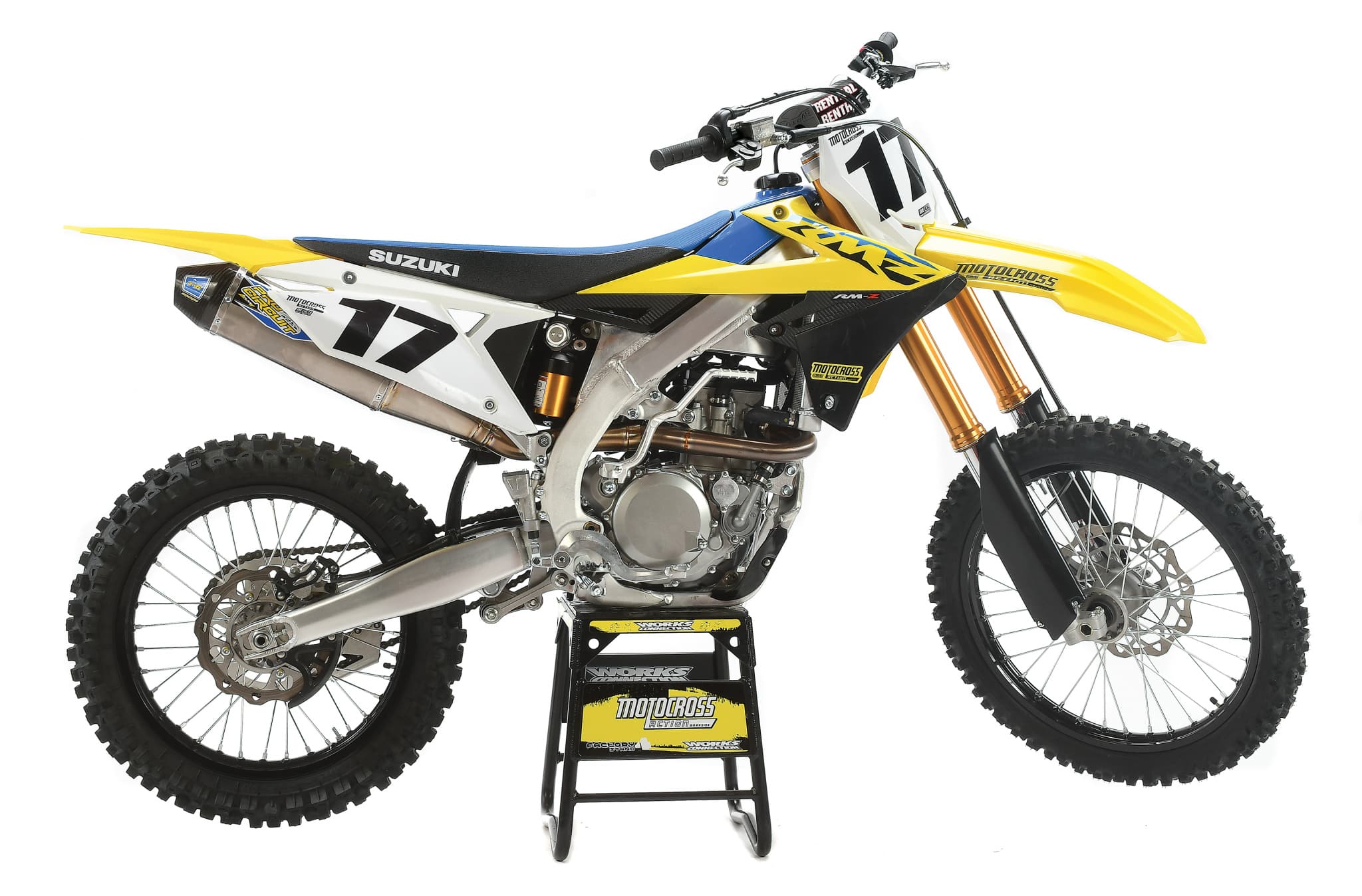
Perhaps Ken Roczen’s success helped sell more RM-Z450s, but since the bike has stayed frozen in time for the last five years, it’s more likely that racers dug into their garages and pulled out their old moth-balled RM-Z450s.
Q: WHAT ARE THE CATEGORIES WHERE THE 2024 SUZUKI RM-Z450 FALLS SHORT?
A: MXA’s job is to evaluate each machine thoroughly in order to analyze what it does well and what it does poorly. Here is a list of the RM-Z450’s no-no list.
(1) Weight. At 241 pounds before you put gas in the tank, the RM-Z450 is the heaviest bike on the track. You might convince yourself that weight doesn’t matter, but added weight is not a plus when it comes to braking, acceleration, suspension or putting the RM-Z450 up on a bike stand.
(2) Horsepower. It’s slow. Yes, Ken Roczen’s RM-Z450 is fast, but you can’t afford or even obtain the parts that his bike uses.
Q: WHY DOESN’T SUZUKI JUST ADD AN ELECTRIC STARTER?
A: Electric starting is a fact of life on every other 2024 four-stroke except the Suzuki. That doesn’t mean that having to kick it is the end of the world; it is just that when you stall or crash in the middle of a race, it is going to take much longer to get your RM-Z450 back in action. Making matters worse is that Suzuki’s kickstart lever is very high on the cases—so high that weak riders or short riders with bad knees will have trouble getting in a full kick.
You might think that all the engineers have to do is remove the kickstarter and its associated gears and replace those parts with electric starter parts. We wish it were so easy. To do it right, and in motocross there is no other way, Suzuki would need all-new engine cases, complex gear combinations to allow the electric start to spin the engine at a very tightly prescribed rpm, and a wiring loom to integrate the contiguous electronics to the battery.
And you don’t need Sherlock Holmes to tell you that once Suzuki went that far, it would be a waste of R&D money not to redesign the valve train, cams, bore and stroke, and layout of the engine with an eye towards losing weight. Oh yeah, did we forget to mention that all the required electric starter parts (including the battery) would add 5 pounds to the already heavy RM-Z450?
What would it cost Suzuki to build an all-new RM-Z450 engine? Well over 10 million dollars.
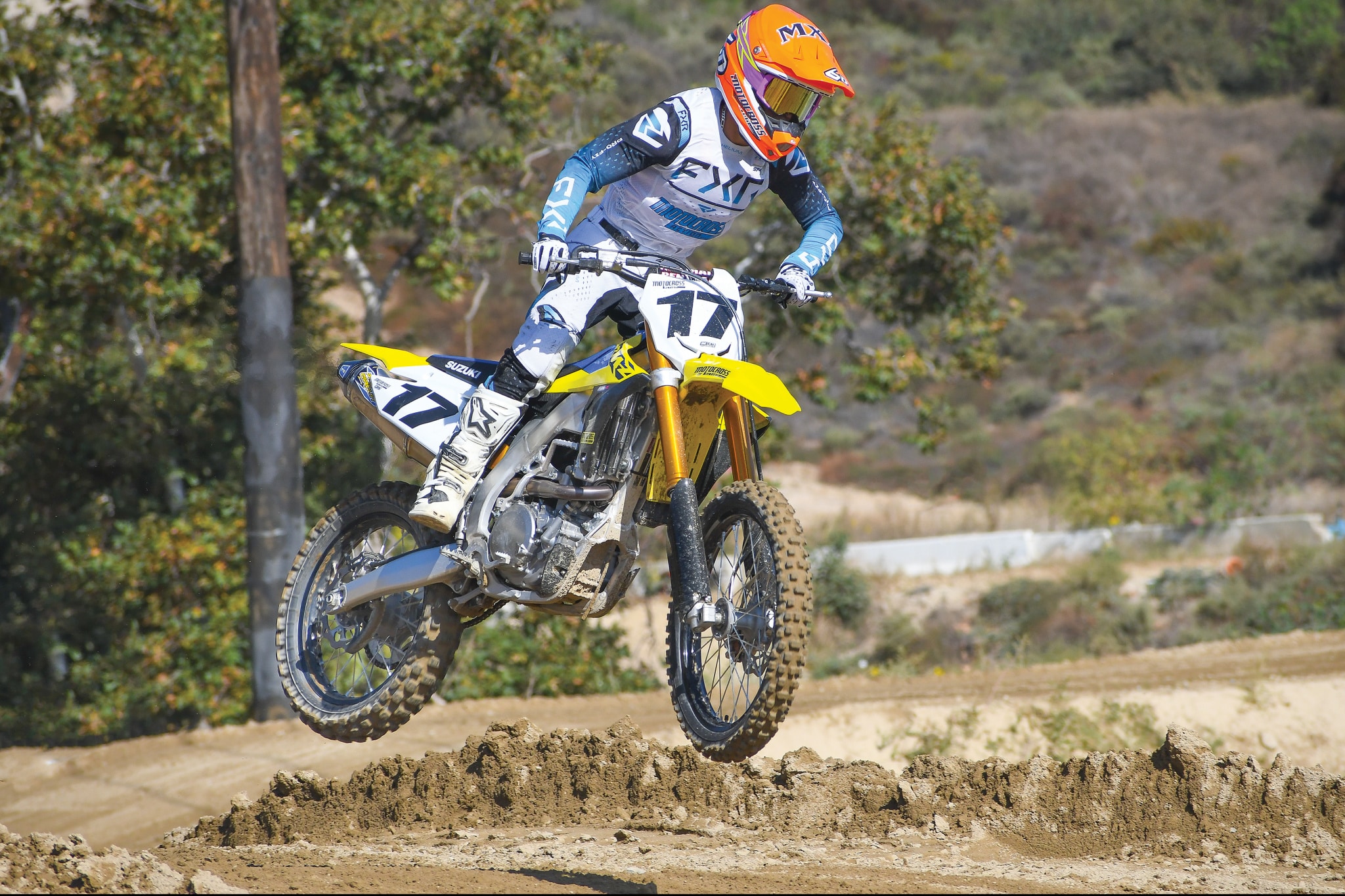
Q: HOW DOES THE 2024 SUZUKI RM-Z450 RUN ON THE TRACK?
A: For the average Novice, Vet or play rider, the existing RM-Z450’s power is located in the perfect spot on the rpm curve to get the job done; however, Pros and high-rpm revvers will not like the RM-Z450 powerband because it gives up too much horsepower on top. After 9000 rpm, the RM-Z450 starts to lose the horsepower race to the class leaders. The 2024 RM-Z450 (with the free Pro Circuit exhaust) peaks at 56.7 horsepower at 9000 rpm, which is low in the powerband compared to its competition. Need proof? By 11,000 rpm, the 2024 Suzuki RM-Z450 makes 5.5 horsepower less than a Yamaha, KTM, Honda or Husqvarna.
The 2024 RM-Z450 is not a lost cause, though, because if you short-shift it, you can keep it in the meat of its powerband. It has a very usable, pleasant and effective 450cc powerband. It is brisk off the bottom and strongest from 7,000 to 9,200 rpm. There is nothing wrong with a low-to-mid powerband on a 450cc motocross bike if you can maximize the good power and resist the urge to go searching for more where it doesn’t exist. After 9200 rpm, a Suzuki RM-Z450 engine makes noise, not horsepower.
Q: WHY DOES MXA’S 2024 RM-Z450 TEST BIKE HAVE A PRO CIRCUIT EXHAUST ON IT?
A: As a rule, MXA tests production motorcycles in the trim that they roll down the assembly line with. We don’t add aftermarket parts unless we consider the stock parts a danger. There are people on the internet who think MXA should hop-up its test bikes because they believe that everyone who buys a new bike immediately re-valves the suspension, installs a remapped Vortex ignition, ports the cylinder head and bolts on an aftermarket exhaust system. We accept that there are people who do make these mods, but these people will end up adding $3,000 worth of parts to the bargain-priced RM-Z450 that they just paid $9,199 for (not counting shipping, setup and state taxes). We will do the math for you. That inexpensive Suzuki will now cost you $12,200.
So, why did we put a Pro Circuit T6 exhaust system on our 2024 Suzuki RM-Z450? We didn’t! It comes stock from Suzuki for anyone who buys a 2024 RM-Z250 or RM-Z450 before January 1, 2024. It’s on our test bike because it comes with it.
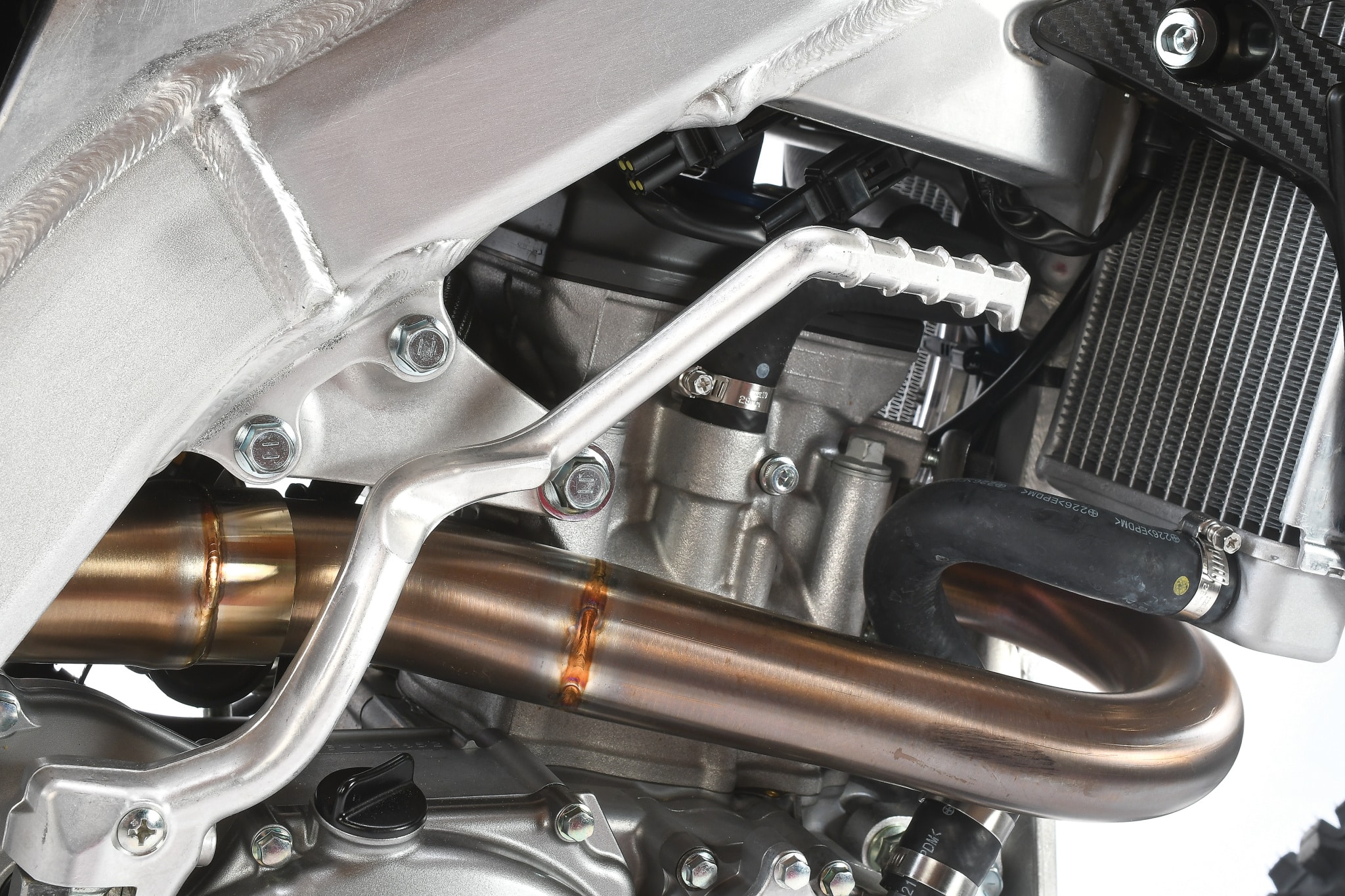
Q: WHAT WOULD WE CHANGE IF WE WERE SO INCLINED?
A: Here is a breakdown of the simple mods that the 2024 RM-Z450 would benefit from—although your wallet won’t.
(1) Gearing. We traded the stock 13/50 gearing for 13/51 sprockets. This allows us to get into third gear sooner and get more drive out of tight turns to make up for the horsepower deficit.
(2) High-pressure radiator cap. The stock 1.1 kg/cm2 RM-Z450 radiator cap allowed our RM-Z450’s coolant levels to drop during long motos. Twin Air and CV4 offer 1.8 kg/cm2 and 2.0 kg/cm2 radiator caps to raise the boiling point of the coolant.
(3) Heavy-duty clutch springs. Heavier springs improve clutch feel, increase bite on acceleration and increase the stock clutch plate life. One caveat: we don’t always run all the heavy-duty clutch springs. Sometimes we find that three stiff springs can fine-tune the feel at the lever.
(4) Shock linkage. We have run the longer Pro Circuit shock linkage for the last couple of years. The longer link arms lower the rear of the Suzuki and stiffen the initial part of the shock stroke, which allows us to have more options in setup.
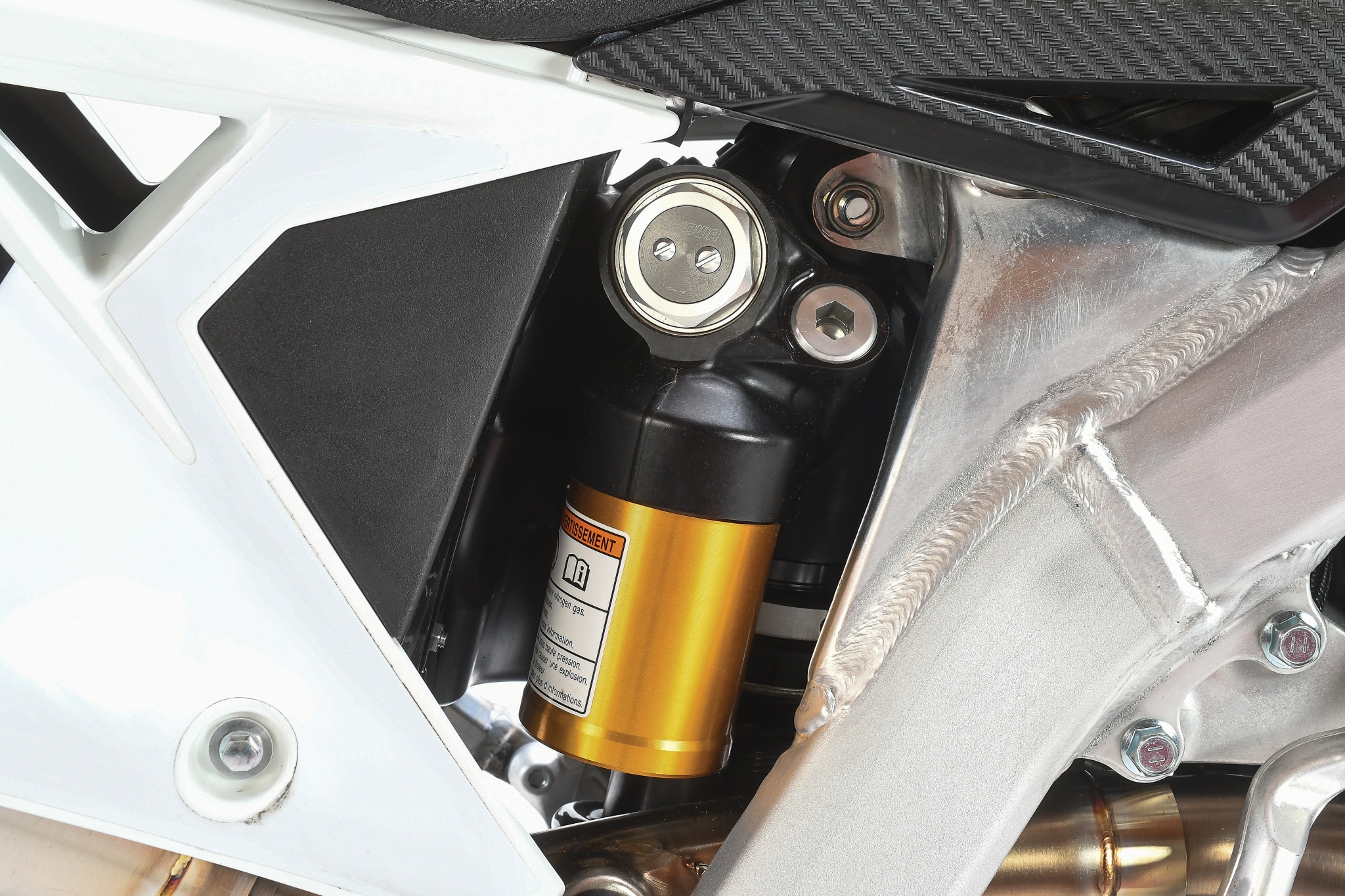
(5) Suspension. After living through the nightmare of the Showa SFF-TAC air fork years, we were glad that Suzuki was willing to spec coil spring forks, just not these exact forks. They are too stiff initially and too soft later. Showa could have easily fixed them on the production line, but they left them so that you’ll have something to spend your money on.
As for the rear shock, we don’t like the feel of the BFRC shock in consecutive bumps and off-camber terrain, and we don’t like its crazy swings in rebound. We wish that Suzuki had spec’ed the more traditional RM-Z250 rear shock from the 2024 RM-Z450s. Luckily, the fork and shock programs aren’t new. They have been around for a few years, so your favorite suspension tuner can probably fix them for you.
(6) Balance. The whole RM-Z450 chassis is out of balance. Our goal from day one was to get the rear end down and the front end up. The object was to kick the frame’s head angle out to slow down the steering input with the added benefit of not head shaking at speed. We slid the forks down into the triple clamps. How far down? Flush with the top of the triple clamp. Plus, the longer Pro Circuit link lowered the rear of the Suzuki and stiffened the initial part of the shock stroke, which allowed us to have more options for compression and rebound settings, fork height and head angle.
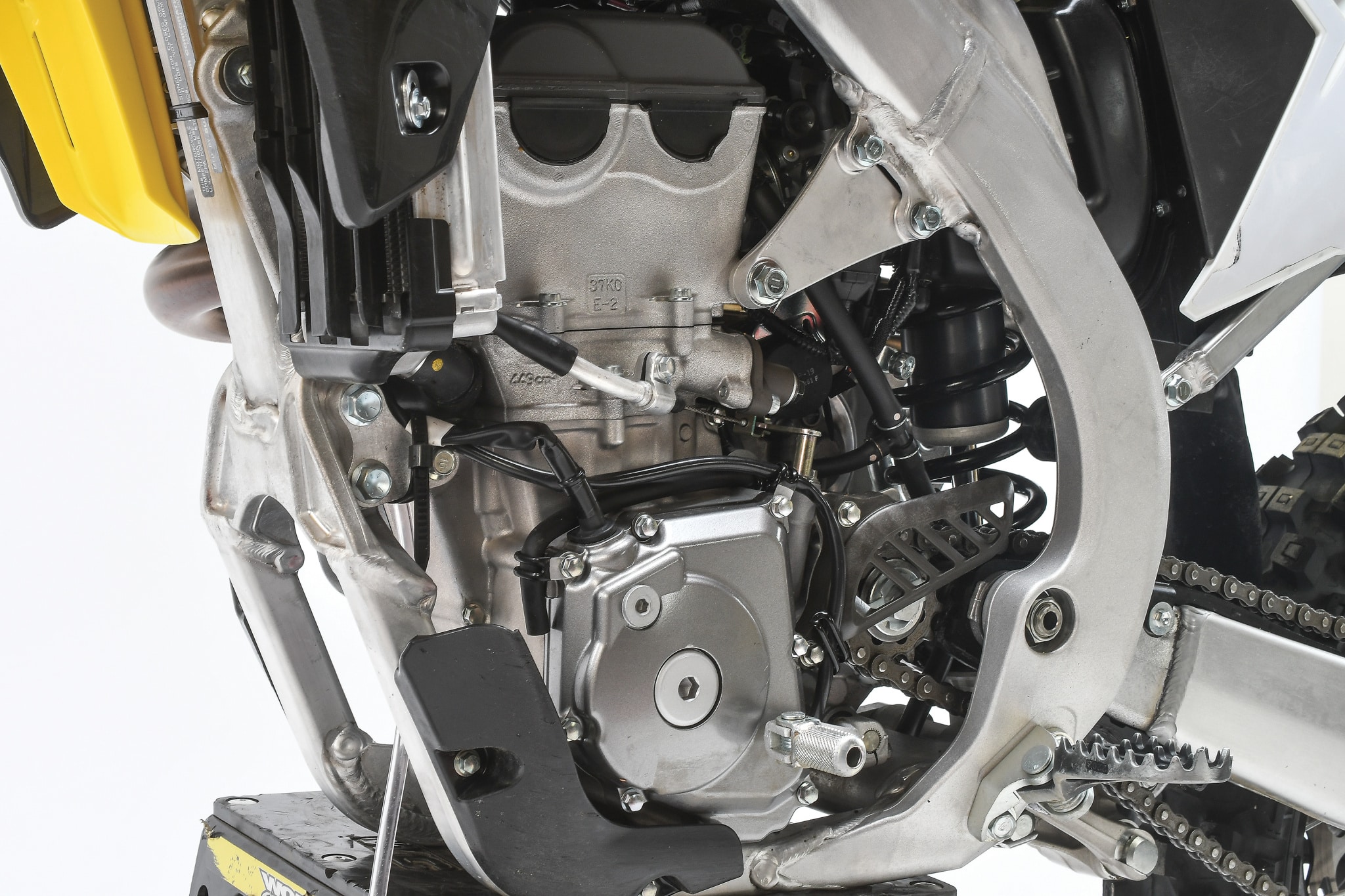
Q: WHAT DID WE HATE?
A: The hate list:
(1) Brakes. Suzuki has a 270mm front rotor. It’s powerful but grabby.
(2) Kickstart. The lack of an electric starter isn’t the end of the world for the Suzuki RM-Z450, but it is one of those things that a consumer believes adds value.
(3) BNG. In years when a manufacturer doesn’t make any mechanical updates, it would be wise to put more than zero effort into designing new graphics.
(4) Weight. One bike has to be the heaviest bike on the track, but why is that bike always the RM-Z450? It weighs, without gas in the tank, 241 pounds.
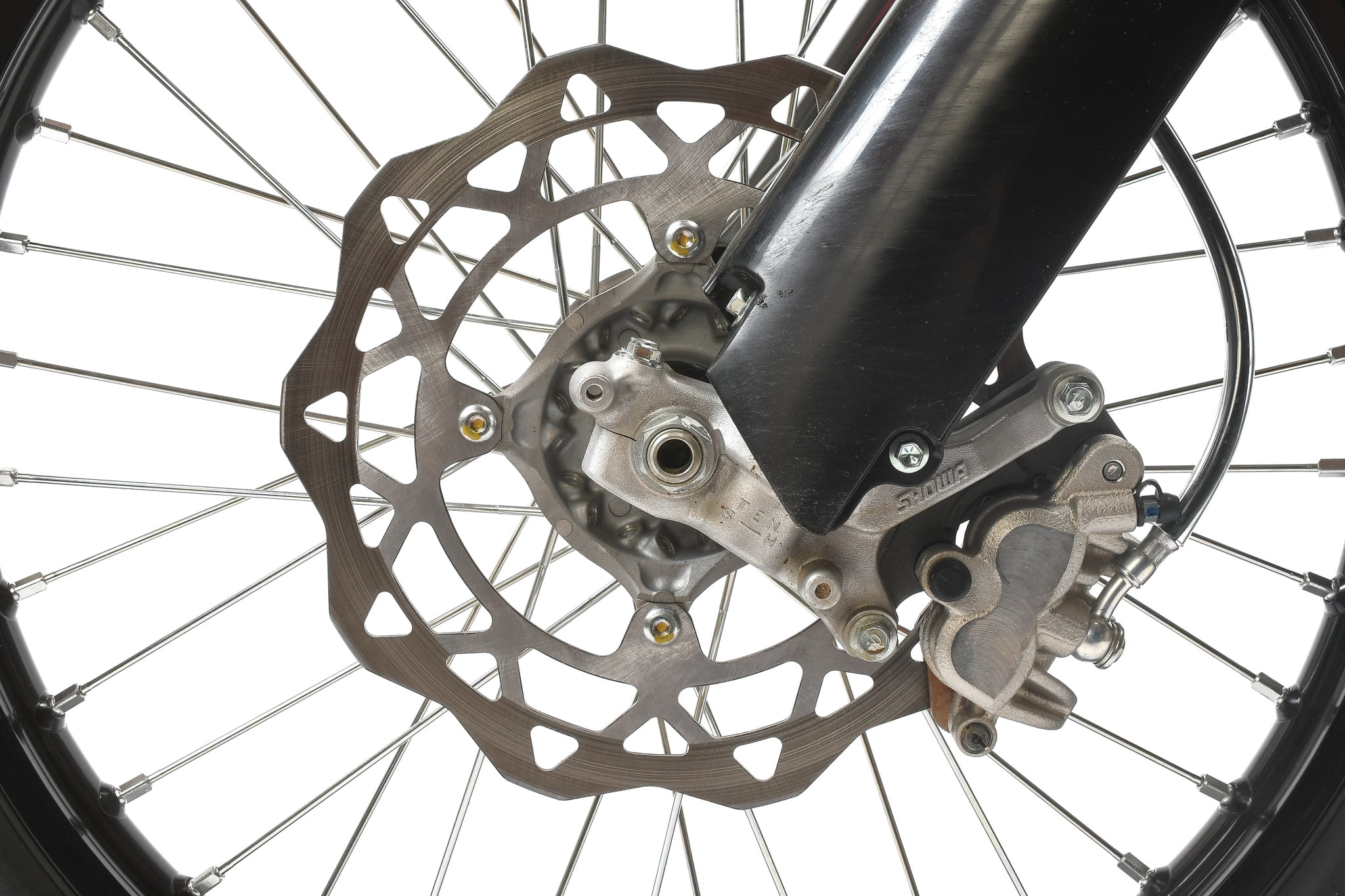
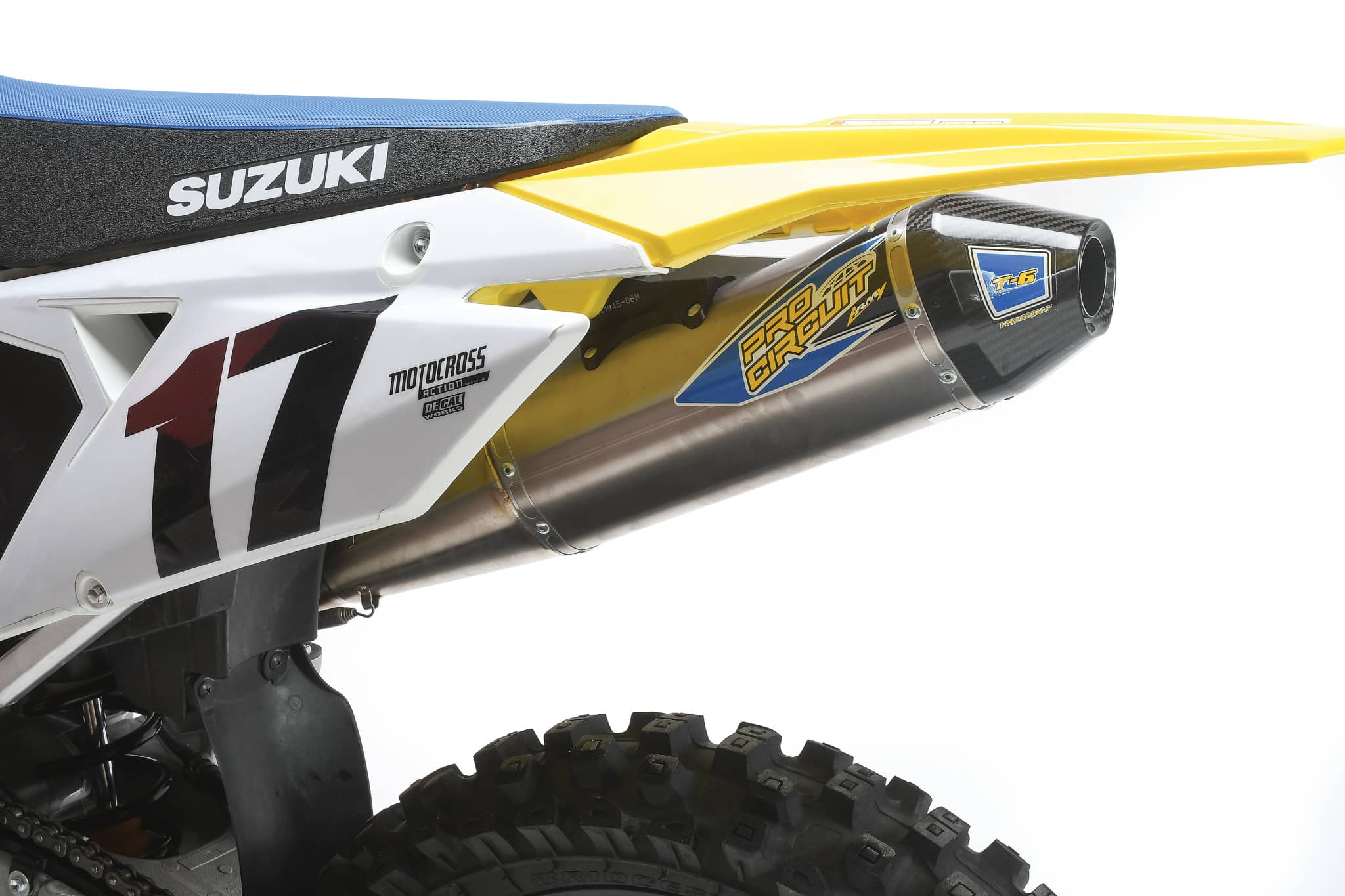
Q: WHAT DID WE LIKE?
A: The like list:
(1) Cornering. The RM-Z450 is at its best on the entrance to turns. In its glory days, the Suzuki was the only bike that turned without effort; the competition has closed the gap.
(2) Power. The 2024 RM-Z450 has a well-placed powerband. It doesn’t make much in the way of peak horsepower, but the power it makes is very usable.
(3) Traction control. The 2024 RM-Z450 features a traction-control system that continually measures throttle opening, engine speed and gear position to adjust the ignition timing and fuel-injector duration to stop wheelspin.
(4) Holeshot Assist. Suzuki’s Holeshot Assist Control (S-HAC) offers three mapping modes for different starting-line setups. We’d be happy with one launch control button that didn’t require us to read the owner’s manual to operate.
(5) Mapping. The GET-developed MX-Tuner 2.0 app allows you to remap the Suzuki RM-Z450 from your Apple or Android smartphone—once you jump through some hoops and get an external battery to power the electronics.
Q: WHAT SHOULD SUZUKI DO IF WE LIVED IN A DREAM WORLD?
A: If Suzuki really wanted to make up for a decade of benign neglect, the Suzuki engineers would shave at least 10 pounds from the RM-Z450, add electric starting, get rid of the weird BFRC shock, design a totally new engine (not just because the current engine is the slowest in the class but because that is where the extra weight is), build a clutch that maximizes power (instead of slipping) and find test riders who prioritize balance over partial fixes.
We know that Suzuki has the know-how to build a world-beating RM-Z450, but they don’t seem to have the will.
Q: WHAT IS THE BEST ADVICE THAT YOU ARE NEVER GOING TO TAKE?
A: If you buy a 2024 Suzuki RM-Z450, don’t spend any money on fancy aftermarket parts. Don’t hop the engine up, and don’t throw money away on bling. Take all of your discretionary income and spend it on the suspension. Why? Because that is where the biggest improvement can be made.
Q: WHAT DO WE REALLY THINK?
A: This is a polarizing machine. Riders either love it or hate it. Potential buyers have to accept that it weighs a ton, isn’t very fast, and is a disaster if you stall in a race and have to kickstart a hot engine. However, Ken Roczen changed a lot of minds about the capabilities of the RM-Z450 this past season, but that was because the public considered the RM=Z450 to be a less than stellar bike. If Ken had ridden a Yamaha, Kawasaki or Husqvarna to the exact same results, no one would have noticed. Ken made a difference to Suzuki’s reputation because their reputation was so bad that what Ken did was considered exceptional.
The 2024 Suzuki RM-Z450 could be a ridable, raceable, and enjoyable bike for someone who wants to get in on the motocross experience without having to file for bankruptcy. As it sits, it is still the best bargain in motocross.
MXA VIDEO:TEST: 2024 SUZUKI RM-Z450







Comments are closed.